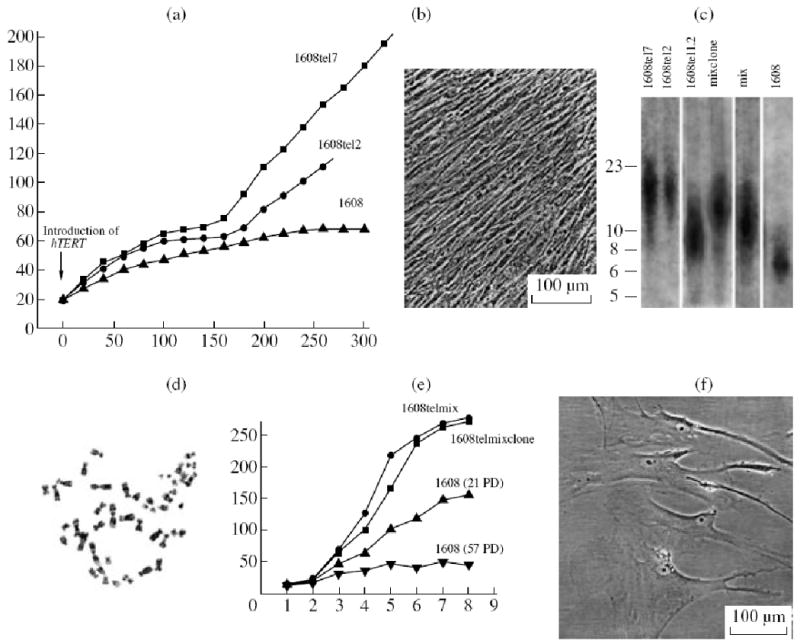Figure 1.

Properties of telomerized human fibroblasts. (a) Curves of cell growth after introduction of gene hTERT; abscissa: time, days; ordinate: number of population duplications. 1608, initial diploid fibroblasts; 1608tel7 and 1608tel12, clones of telomerized cells. (b) View of a closed monolayer of telomerized cells with a very high cell density. (c) Telomere lengths after telomerization, kB according to Southern hybridization. 1608, initial cells; other lanes represent different variants of telomerized cells. (d) Diploid karyotype of telomerized cells; (e) Curves saturation of cell proliferation reflecting the increase in cell numbers per unit area as the growth was inhibited due to contact inhibition of proliferation; abscissa: time, days; ordinate; number of cells, thousands. 1608telmix and 1608telmixclone, telomerized cells; 1608 (21 PD), young initial fibroblasts; 1608 (57 PD), old fibroblasts. PD, population duplication. (f) Telomerized cells in the state of artificial senescence.
